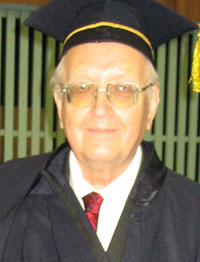Professor Oleg Figovsky is a leading world scientist in the field of novel materials technologies, member of European Academy, foreign member of two Russian academies (RAACN & REA) and founder, Director R&D of Israeli Research Centre Polymate was established in 1997 and since has developed many advanced and novel environmentally friendly superior polymer and composite materials and technologies, specialized in environmental engineering and nano-technologies. Now prof. O. Figovsky is also Director R&D of two US companies: Nanotech Industries, Inc. и Hybrid Coatings Technologies, Inc. (Daly City, CA).
The main areas of researches of company “Polymate” and its employees are corrosion resistant polymer, silicate and hybrid coverings for various substrates as well as new binders for the concretes operating in adverse environments. The special attention is given the use of renewable raw material and environmentally friendly technologies particularly nonisocyanate polyurethane systems. Search of the new organic-modified silicates is conducted in the field of inorganic coatings. Development of the advanced binders for concrete are conducted mainly with the use of liquid rubbers and new silicone additives. A new direction in the creation of coatings and binders is a hybrid nano-structured composition.
Main inventions made by employees of “Polymate” were devoted to polymeric materials for coatings based on hybrid nonisocyanate urethane-epoxides. A promising method was introduced in the form of a nonisocyanate urethane-epoxy polymer network with lower permeability and increased chemical resistance properties to non-polar substances. Moreover, hybrid nonisocyanate networks are made by a synthesis process that uses far more environmentally benign materials than isocyanates and phosgene.
US patent issued to O. Figovsky [1] relates to a hybrid nonisocyanate polyurethane network polymer formed by cross-linking at least one cyclocarbonate oligomer and at least one amine oligomer. Thecyclocarbonate oligomer contains a plurality of terminal cyclocarbonate groups. At least one cyclocarbonate oligomer further comprises from about 4% to about 12% by weight of terminal epoxy groups. Because at least one cyclocarbonate oligomer contains both cyclocarbonate and epoxy reactive groups, the network formed therefrom is referred to as a hybrid nonisocyanate polyurethane network. The cyclocarbonate oligomer or oligomers have an average functionality towards primary amines of from about 2.0 to about 5.44. The amine oligomer comprises at least one primary amine-terminated oligomer terminated with primary amine groups and has an average functionality towards cyclocarbonate groups of from about 3.0 to about 3.8. The amine oligomer is present in an amount from about 0.93 to about 0.99 of the amount of the amine oligomer that would be required to achieve a stoichiometric ratio between the primary amine groups of the amine oligomer and the cyclocarbonate groups of the cyclocarbonate oligomer. The hybrid nonisocyanate polyurethane network polymer formed has a gel fraction of not less than about 0.96 by weight. These materials, in particular, are useful as nonporous monolithic coatings, coverings and linings, which can be used for the corrosion protection and wear protection of concrete, metallic and wood surfaces.











